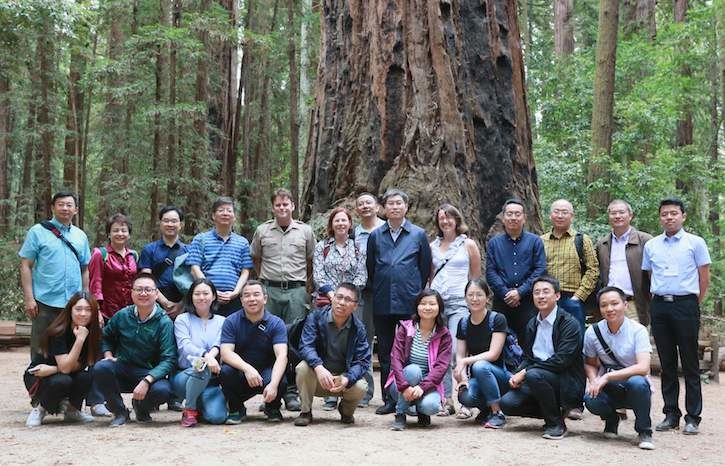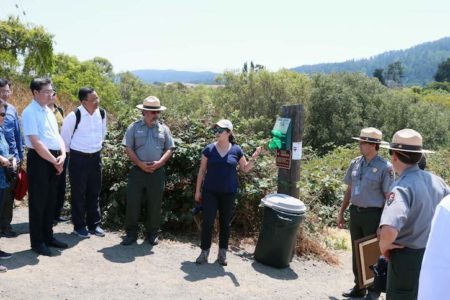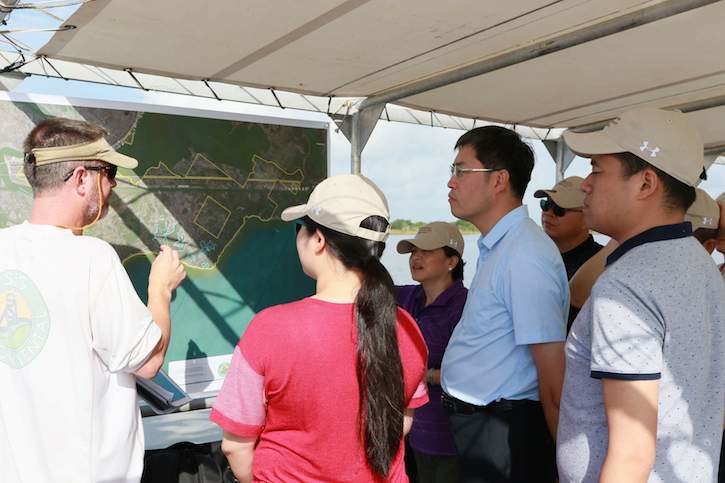
By Li Zhu & Rose Niu
Forests are worth more standing than cut down. It has taken humanity many decades, if not centuries, to arrive at this seemingly counterintuitive yet vital concept—an idea that is fundamentally transforming man’s understanding of nature and how it should be treated. This concept has also formed the foundation of an increasingly influential approach to natural resource management: payment for ecosystem services or natural capital. Instead of viewing natural resources as extractable raw materials for direct one-off uses, this approach recognizes a wide array of ecological products and services that nature provides to humans, from provision of food, clean water and air to regulation of climate and carbon storage. Finding a way to mainstream this approach into decision-making is therefore a matter of urgency to reshape the way we safeguard ecosystems and derive benefits from them.
After decades of almost unbridled economic growth with little regard to environmental impact, China has recently embarked on an ambitious and inspiring quest to build an “ecological civilization,” recognition that only a healthy and vibrant environment can sustain economic prosperity and a thriving society in the long run. Nothing captures this better than the now well-known catchphrase from China’s top leadership—‘Lush mountains and lucid waters are invaluable assets.” Acknowledging the value of ecosystems and the necessity to safeguard them represents a breakaway from the conventional mindset that dominated China’s development push: economic growth at all costs. But this is just a beginning. The more critical next step is translating this overarching concept into concrete and well-designed policies and actions that can effect change on the ground.

This is where the Paulson Institute comes in. In early August, we organized a training program on “Mainstreaming the Values of Natural Capital into Policy & Finance” for a small group of targeted Chinese policymakers together with Stanford University. This is part of a broader collaboration between the Institute, the Department of Planning of China’s National Development and Reform Commission, Chinese Academy of Sciences, and Stanford University to help China explore and design mechanisms to better recognize the economic values of ecosystem services in its policies. During this two-week training, the delegation spent five days at Stanford University, learning from world-class experts on methodologies and pioneering practices around natural capital and discussing models from around the world that help realize the economic value of ecosystem services. The group also took two short field trips to the neighboring parts of the San Francisco Bay area to learn how nature-based solutions are being used to build resilience against flooding aggravated by sea level rise caused by climate change, and to learn how well-protected ecosystems are providing a suite of benefits to local communities and the nearby city. For example, marshes are being restored along the shorelines to cushion the impact from flood and help lower the sea level in certain areas of the San Francisco Bay. This approach, in combination with conventional levees, can provide more effective flood protection.
The following week, the group met with officials from the Louisiana state government to learn how ecosystem services are factored into its master plan for socio-economic development. For a group of senior officials intimately involved in developing China’s Five-Year Plans, this was especially informative, as Louisiana planners have already embraced the concept of natural capital—not only in assessing the economic values it provides, but also in designing solutions. The group also visited a wetland mitigation bank to understand how permits or credits related to ecosystem services are traded on ecosystem markets, and how private investment can be leveraged to rehabilitate or create ecologically-sound wetlands that generate wetland mitigation credits to offset loss or damage of wetlands caused by development projects. The group visited the Point Reyes National Seashore, where they interacted extensively with the Park management staff to understand how they work with the local ranching community to reconcile its resource needs with the resource protection requirements of the national park. Given China’s population size and strained resources, best practices from Point Reyes will help the delegation rethink China’s policies to better balance resource conservation with local livelihoods.

In the short span of two weeks, the group was exposed to an abundance of information, from theoretical frameworks to methodologies, from policy planning to project implementation on the ground. Most importantly, this learning experience sparked plenty of discussion and reflection among the delegates, with one commenting “I’m now more convinced than ever that ecosystems have economic values, and these values can be measured scientifically.” After a training session on building coastal resilience through enhancement of natural capital, one official from a coastal province noted, “Our current practice of land use zoning based on four main function designations is a first step in the right direction. But it’s too coarse, compared to what’s being applied in the U.S. We need more in-depth analysis on a finer scale to site our future projects in a way that takes advantage of nature-based green infrastructure and minimizes risk exposure to various hazards.” After a field visit to a wetland mitigation bank, an official from China’s central ministry observed, “The example of the wetland mitigation bank is very illuminating. It reflects the principle of letting these who provide ecosystem services benefit financially and those who damage the services pay. It also creates investment opportunities and brings in private capital for restoring ecosystems. We have something embryonic and comparable in China, but it’s only for urban-arable land offset at present. We should explore the potential of and experiment with the wetland mitigation bank model in China and also create an enabling policy environment.”
As a co-organizer of this training, we couldn’t feel more encouraged and inspired by these comments. It is clear to us that the concepts of natural capital are taking roots in the group members’ minds. More importantly, the delegates are already reflecting on what they could have done differently as policymakers, as well as contemplating what they should do next. To us, this is what such a training is all about—imparting new ideas, and catalyzing new actions that will advance China’s vision for “lush mountains and lucid waters.”



